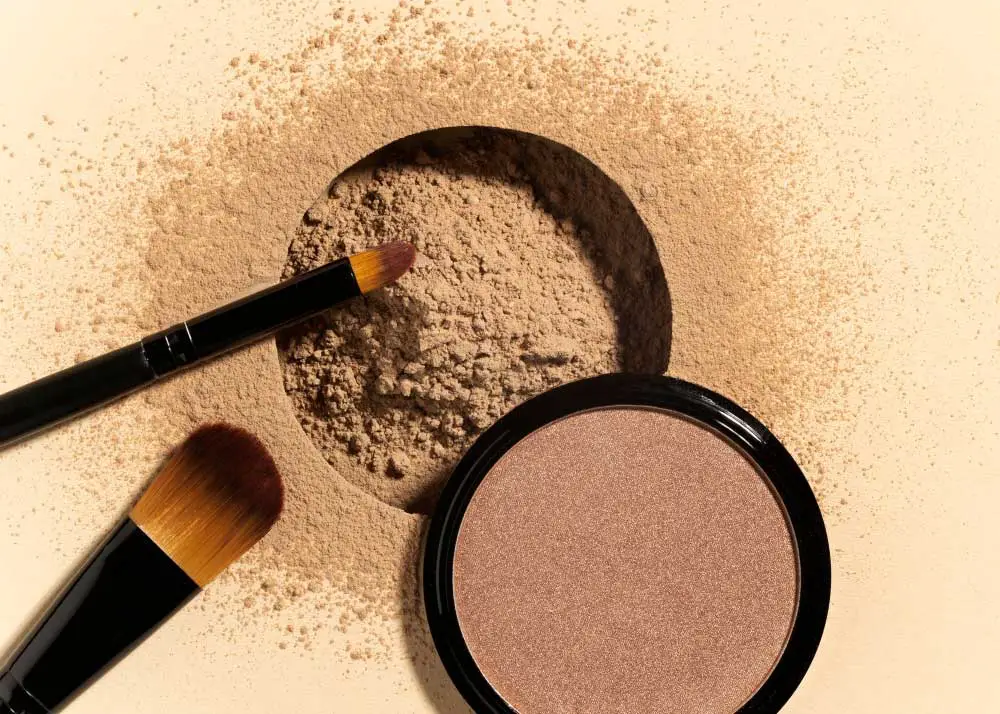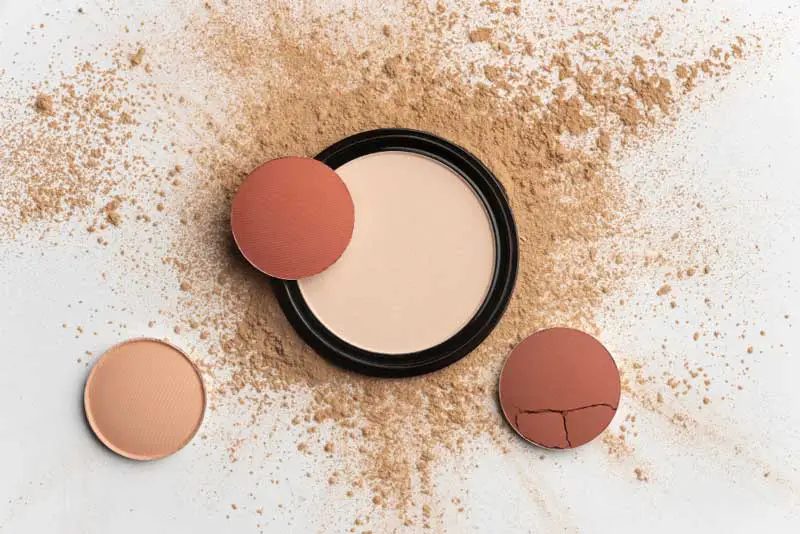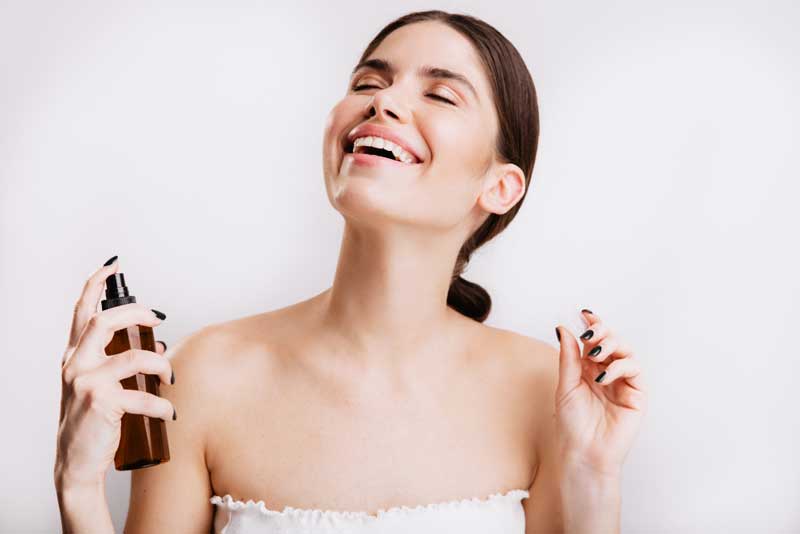1. Introduction
When it comes to setting your makeup for long-lasting wear, there are two popular options: setting powder and setting spray. Both products claim to keep your makeup in place and prevent it from creasing or smudging throughout the day. But which one should you choose? In this ultimate guide, we will compare setting powder and setting spray, discussing their differences, benefits, and application techniques. Whether you are a makeup beginner or a seasoned pro, this article will help you make an informed decision and achieve flawless, long-lasting makeup looks. Plus, we will even show you a DIY recipe for making your makeup setting spray!
Table of Contents
2. Understanding setting powder and setting spray

Setting powder and setting spray are two different products that serve the same purpose: to set your makeup.
Setting powder is a finely milled powder that is applied after foundation and concealer to mattify the skin and lock in your makeup. It is available in both translucent and tinted options, making it suitable for various skin tones. Setting powder helps to control oiliness, minimize the appearance of pores, and provide a smooth finish to the skin. It is typically applied with a fluffy brush or a makeup sponge.
On the other hand, setting spray is a fine mist sprayed onto the face after makeup application. It helps to hydrate the skin, melt the powders into the skin, and create a long-lasting hold. Setting spray can also give a natural, dewy finish to the skin. It is usually sprayed at an arm’s length away from the face and left to air dry.
Now that we have a basic understanding of these products, let’s delve into the specific benefits and drawbacks of setting powder and setting spray in the next section.
3. The benefits of using setting powder
Setting powder offers several benefits that can enhance your overall makeup look. Here are some of the advantages of using setting powder:
1. Oil control: One of the biggest benefits of setting powder is its ability to control oiliness throughout the day. If you have oily skin, setting powder can help absorb excess oil and mattify your complexion, leaving you with a shine-free finish.
2. Long-lasting makeup: Setting powder helps to lock in your foundation and concealer, making them last longer. It prevents your makeup from creasing or smudging, ensuring that it stays intact for hours.
3. Minimizes the appearance of pores: Setting powder can blur the look of your pores, giving you a smoother complexion. It creates a soft-focus effect that diffuses the light and makes your skin appear more even.
4. Suitable for all skin types: Setting powders are available in various formulations to cater to different skin types. From mattifying powders for oily skin to hydrating powders for dry skin, there is a setting powder suited for everyone.
In the next section, we will explore the benefits of using setting spray and how it differs from setting powder. Stay tuned!
4. The benefits of using a setting spray
Setting spray, on the other hand, offers a different set of advantages that may appeal to those who prefer a lightweight and dewy finish. Here are some benefits of using setting spray:

1. Enhanced longevity: Just like setting powder, setting spray helps prolong the wear of your makeup. Locking in your foundation, concealer, and other products, ensures that your makeup stays fresh and in place throughout the day.
2. Hydration and freshness: Setting sprays often contain hydrating ingredients and antioxidants that can revitalize and nourish the skin. They provide a burst of moisture, giving your complexion a healthy and dewy appearance.
3. Makeup melding: Setting spray helps blend your makeup seamlessly, creating a flawless and natural-looking finish. It helps to eliminate any cakey or powdery buildup and ensures that your makeup looks smooth and well-blended.
4. Versatility: Setting sprays can be used at different stages of your makeup routine. They can be applied before makeup application to prime the skin, or after to set the look. Some setting sprays can also be used as a refreshing mist throughout the day to revive your makeup.
In the following section, we will compare and contrast setting powder and setting spray to help you make an informed decision on which one to choose. So, keep reading to find out which option is best suited for you!
5. How to choose between setting powder and setting spray
When it comes to choosing between setting powder and setting spray, there are a few factors to consider.
Firstly, assess your skin type. If you have oily skin, setting powder may be the better option for you as it helps control excess oil and shine throughout the day. On the other hand, if you have dry or normal skin, a setting spray can provide hydration and a more dewy finish.
Secondly, consider the finish you desire. If you prefer a matte look with a more airbrushed appearance, setting powder can help achieve that. However, if you want a more natural and glowy finish, a setting spray can give you the desired effect.
Lastly, think about the occasion and longevity you need. If you have a long day ahead or a special event, setting spray can help your makeup stay in place for an extended period. Setting powder, on the other hand, maybe more suitable for everyday wear and touch-ups.
Ultimately, the choice between setting powder and setting spray depends on your personal preferences, skin type, and the look you want to achieve. Experimenting with both and finding the right combination that works for you may be the best approach.
6. Tips for using setting powder effectively

Using setting powder effectively is essential to achieve a flawless and long-lasting makeup look. Here are some tips to help you make the most out of your setting powder:
1. Choose the right powder for your skin type: Just like any other makeup product, setting powders come in different formulations suitable for various skin types. If you have dry skin, opt for a hydrating or illuminating powder. For oily skin, look for oil-absorbing or mattifying powders.
2. Apply with a fluffy brush: A fluffy brush allows for a more even distribution of powder on the skin. Use a large powder brush and gently swirl it over the powder, tapping off any excess before applying it to your face.
3. Focus on the T-zone: The T-zone, consisting of the forehead, nose, and chin, tends to get oilier throughout the day. Concentrate your powder application on these areas to keep them shine-free.
4. Press and roll technique: Instead of swiping the powder across your face, use a pressing and rolling motion. This technique helps to set the makeup without disturbing the products underneath.
5. Use a lighter hand for a natural finish: If you prefer a more natural finish, use a light hand when applying the setting powder. Start with a small amount and build it up gradually as needed.
Remember, setting powder is a versatile product that can be used for touch-ups throughout the day. Keep a compact or a small brush in your purse for quick fixes on the go.
Now that you have some tips on using setting powder effectively, let’s move on to the next section where we will discuss how to make the most out of setting sprays.
7. Tips for using setting spray effectively
Once you have mastered the art of using setting powder, it’s time to explore the world of setting sprays. Setting sprays are a great addition to your makeup routine as they not only help your makeup last longer but also provide a refreshing and hydrating feel to the skin. Here are some tips to help you make the most out of your setting spray:
1. Choose the right setting spray for your needs: Just like setting powders, setting sprays come in different formulations. If you have oily skin, opt for a mattifying setting spray. For dry or dehydrated skin, look for a hydrating or dewy finish setting spray.
2. Prep your skin before applying setting spray: For optimal results, make sure your skin is clean and well-moisturized before applying setting spray. This will create a smooth canvas for the spray to adhere to and will help enhance the longevity of your makeup.
3. Hold the bottle at arm’s length: To ensure even distribution, hold the setting spray bottle about 6-8 inches away from your face. Mist the spray in a “X” or a “T” motion to cover all areas of your face.
4. Let it dry naturally: Avoid touching or rubbing your face after applying setting spray. Let it dry naturally to ensure that it fully sets your makeup in place.
5. Use throughout the day for touch-ups: Setting sprays can also be used throughout the day to refresh your makeup and keep it looking fresh. Simply mist a bit of setting spray onto your face and gently pat it in with a makeup sponge or your fingertips.
6. Experiment with different application techniques: Don’t be afraid to experiment with different application techniques. Some people like to apply setting spray before their makeup, while others prefer to use it as a final step. Try different methods to find what works best for you.
Remember, setting spray and setting powder are not mutually exclusive. You can use them together for an even more long-lasting and flawless makeup look. Play around with different combinations and techniques to find the perfect combination that suits your needs.
In the next section, we will delve into the factors you should consider when choosing between setting powder and setting spray. Stay tuned!
8. Final thoughts and recommendations
Final thoughts and recommendations
When it comes to choosing between setting powder and setting spray, there is no one-size-fits-all answer. It ultimately depends on your individual preferences, skin type, and the specific results you are looking to achieve with your makeup.
Setting powders are ideal for those who want to control shine and oiliness, as well as blur the appearance of imperfections. They are also great for setting foundation and concealer, giving your skin a matte finish. On the other hand, setting sprays are perfect for those who want their makeup to last longer and have a natural, dewy appearance. They are also refreshing and provide a hydration boost to the skin.
It’s important to consider your skin type and concerns when making your decision. If you have oily skin, setting powder may be the better option, as it can help absorb excess oil. If you have dry or dehydrated skin, a hydrating setting spray can provide a much-needed moisture boost.
Additionally, take into account the weather and occasion. If you’re attending a special event or will be outside in hot and humid conditions, a setting spray can help prevent your makeup from melting off.
In the end, it’s all about personal preference. Some people may prefer the matte finish of setting powder, while others may love the refreshing feel of setting spray. And remember, you don’t have to choose just one! Experiment with different combinations and techniques to find the perfect balance that works for you.
Now that you have a better understanding of setting powder and setting spray, it’s time to try them out for yourself. Remember to take note of how each product performs on your skin and make adjustments accordingly. With the right choices and techniques, you can achieve a flawless and long-lasting makeup look that suits your individual style and needs.




Leave a Reply